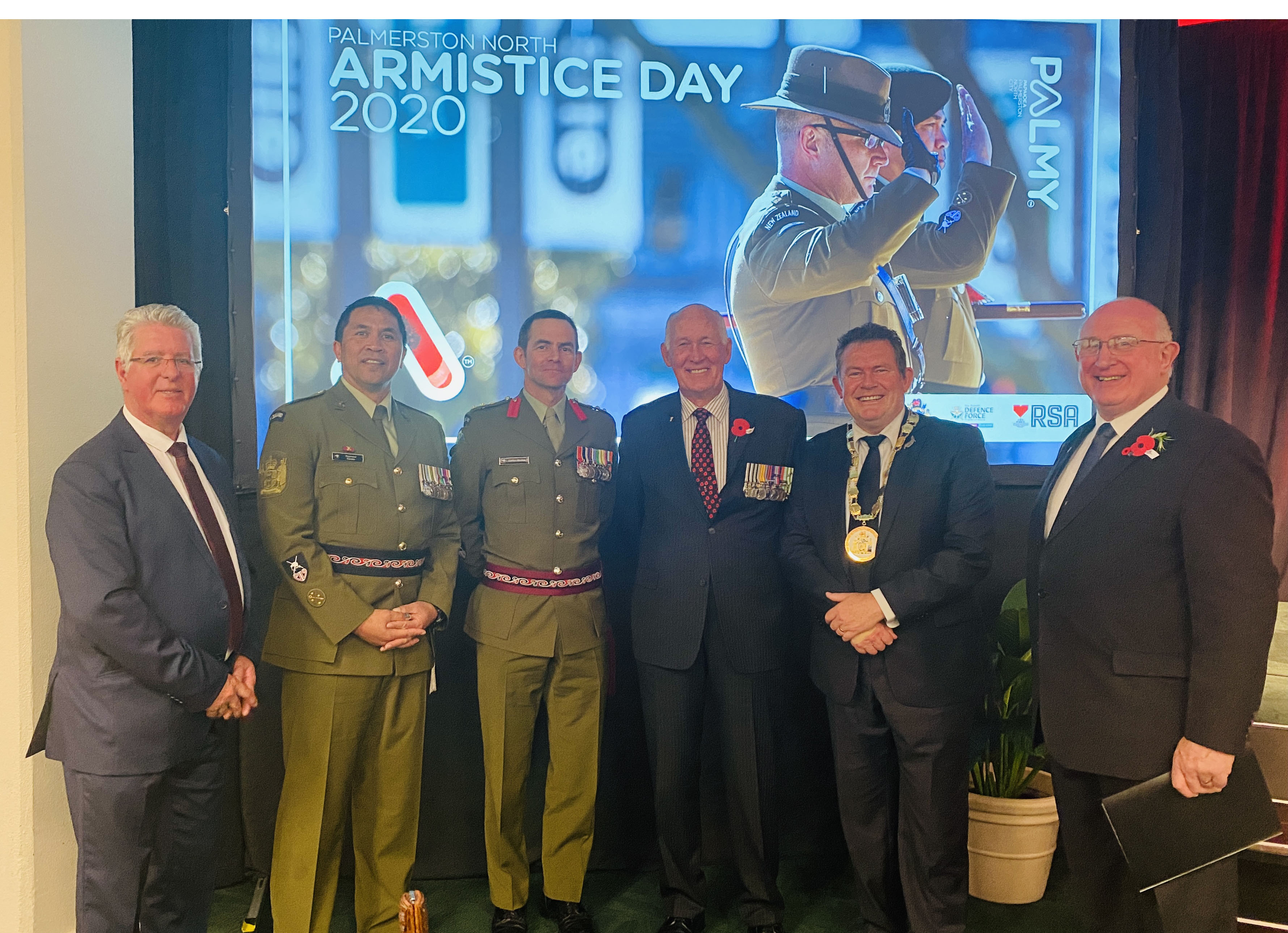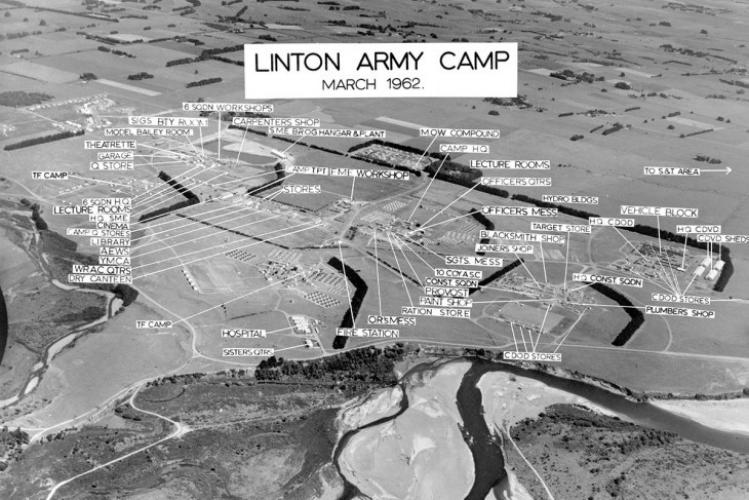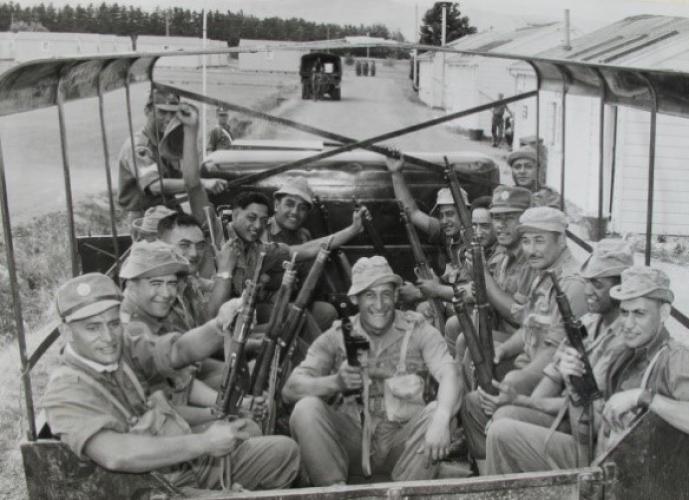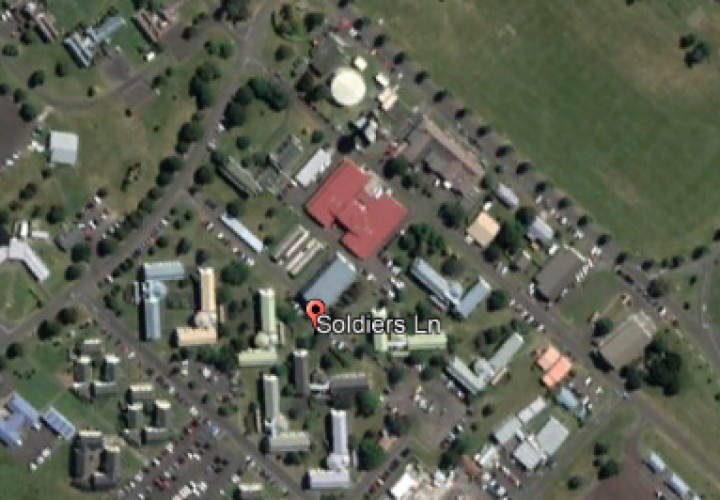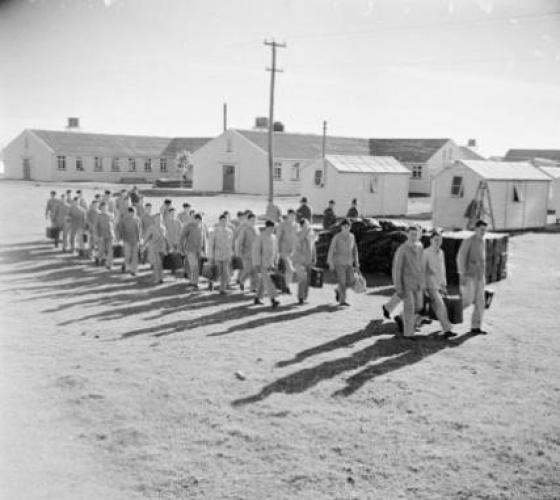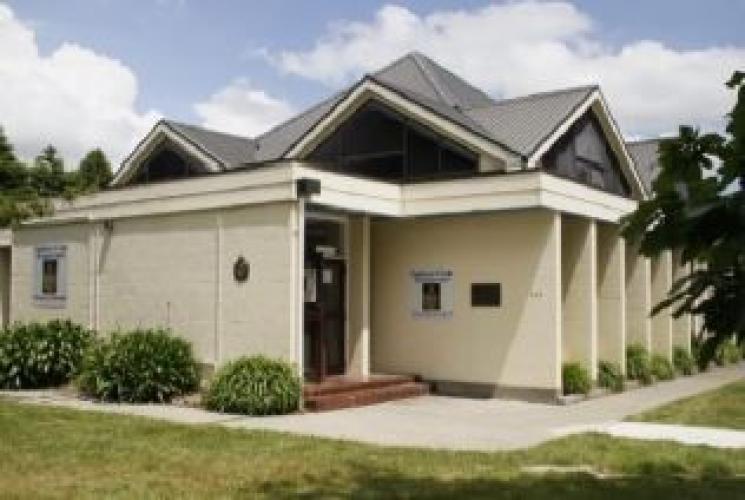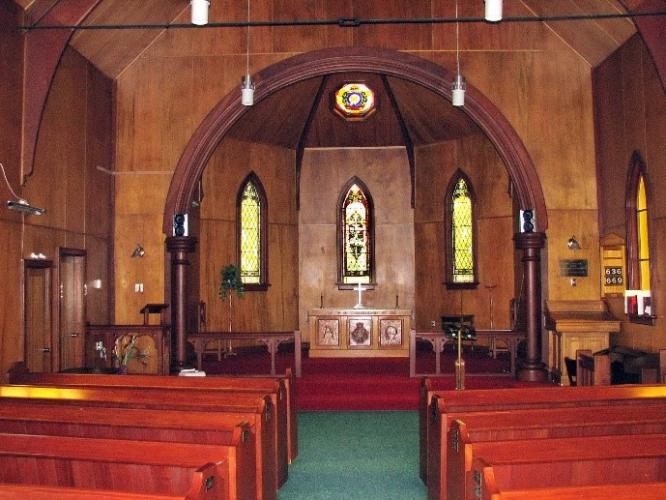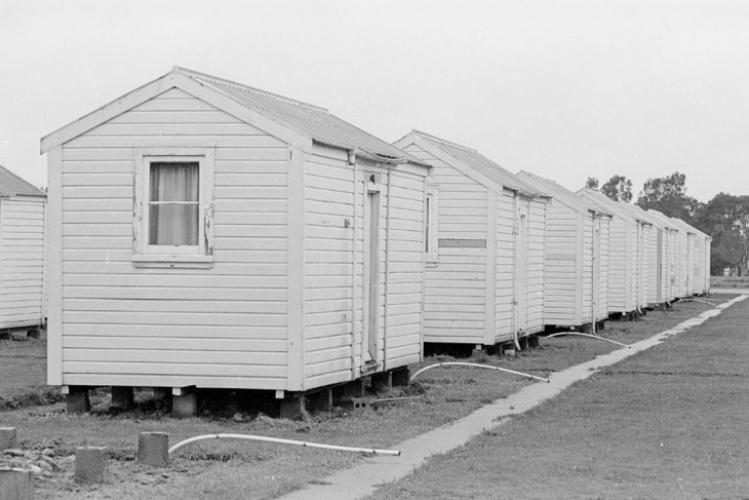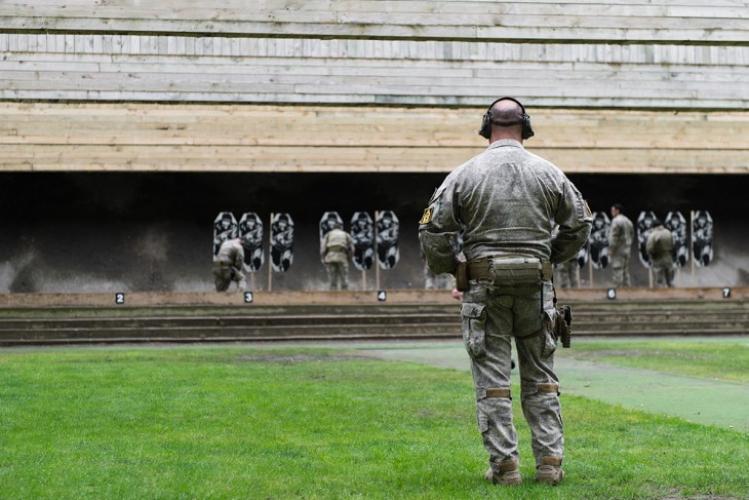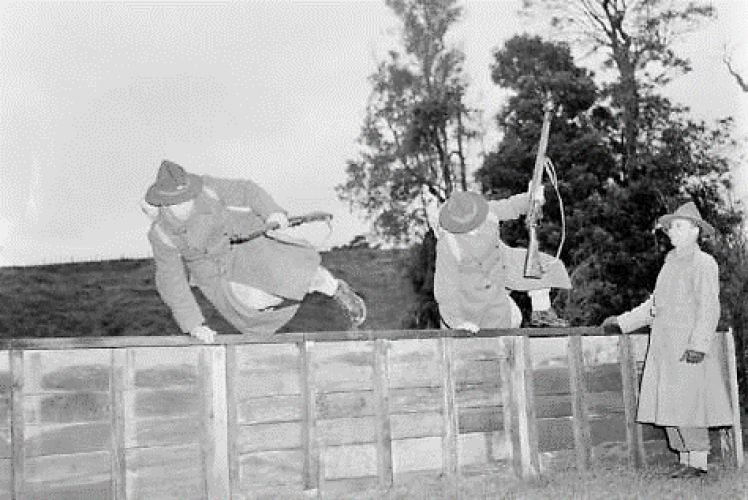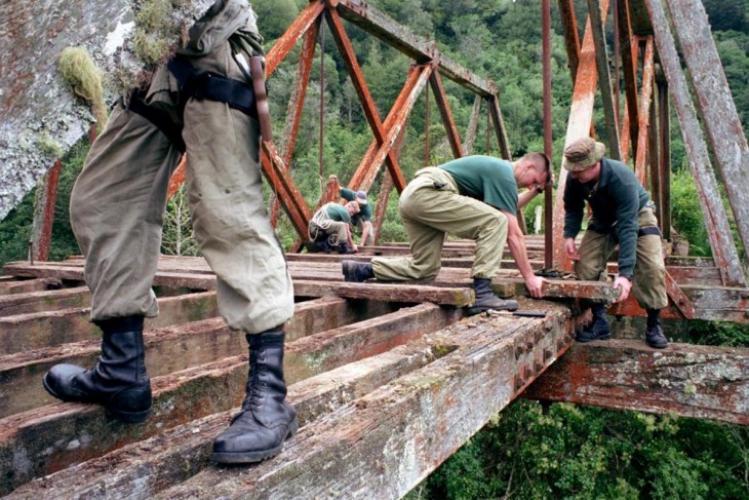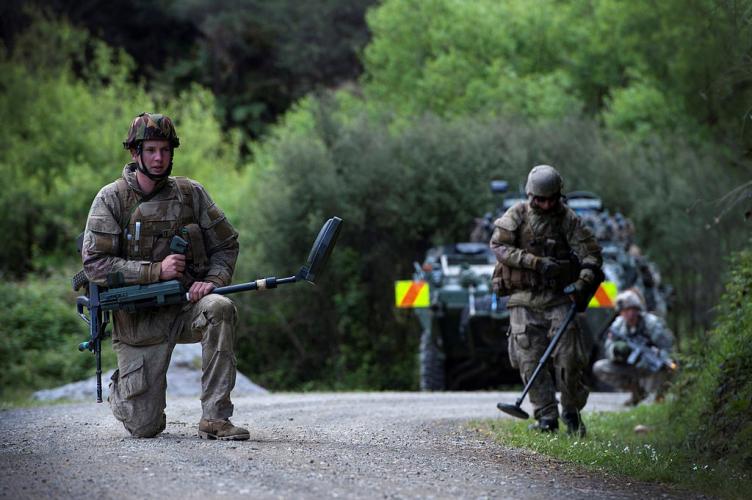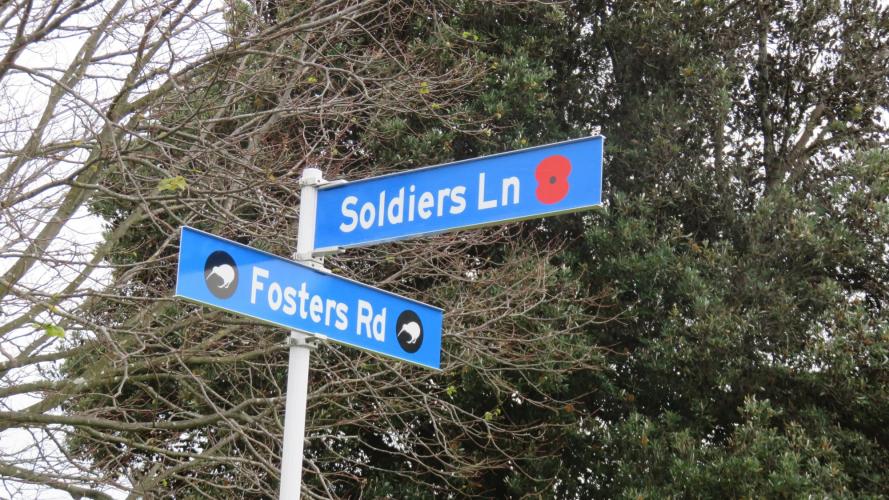275 Soldiers Lane Linton Military Camp Palm Nth, aerial view 2019
Reason for the name
This street was named as a tribute to all soldiers who have passed through Linton Camp for overseas service. Linton Military Camp is currently the largest New Zealand Army base and is home to the Headquarters 1(NZ) Brigade. It is located just south of Palmerston North. Most streets within NZDF Camps and Bases are named in honour of prominent people, battles, campaigns, ships, aircraft and places creating a rich history of our military service.
The first tents arrived on site at Linton in 1942 followed six months later by prefabricated huts. From that date many thousands of servicemen and women have lived, been trained and departed for service all over the world.
Today, Linton Military Camp is the main operational hub of the New Zealand Army and 2000 personnel are based there. Major units from 1 (NZ) Brigade are based in Linton along with other units.
The street Soldiers Lane is a tribute to all the soldiers who have passed through the camp and continue to do so today and in the future.
Author: The Poppy Places Trust with advice from Lieutenant Colonel (Retired) Joe Hollander
The land that the present Linton Military Camp stands on was purchased by the Government in 1941 for use as a camp for Territorial and other home defence forces, with the first units taking up occupation in tented accommodation in February 1942, with the first prefabricated huts erected in August 1942. Unlike Burnham and Papakura, Linton was not initially intended to be a mobilisation camp and as such was provided with minimal facilities. As the war intensified and the threat from Japan increased and the use of infrastructure in Palmerston North for defence purposes stretched to the limit, the decision was made to bring Linton up to the same standard as Burnham and Papakura. Deliberately designed as a precaution against air attack Linton camp was designed with nine Battalion Blocks, with only eight being completed each with a; parade ground, accommodation, cookhouse, mess building, and ablutions.
Wartime construction was completed in 1945, and included; 182 Permanent buildings, 521 two-men huts, 155 four-men huts, 480 eight-men huts, a power plant, water and sewage reticulation, rifle ranges, assault courses, magazines and a railway siding.
Linton Camp was accepted in general usage from 1943, with the names Camp Manawatu or Camp Kairanga used earlier. Camp Ravenswood or Camp Whitmore were considered as new names in the 1960s, but uses of these names never eventuated.
In the 1950s, two large fires destroyed the Ordnance Depot and the Cinema.
In October 2012, a series of shots were fired by an armed soldier, believed to be under the influence of alcohol, he then barricaded himself inside a house on the base. The NZ Police Armed Offenders Squad responded. After a five-hour siege, the police originally reported the man was apprehended, but later revealed he had committed suicide.
The Engineer Corps Memorial Centre (ECMC) is a museum, library and chapel complex located at Linton Military Camp, The centre focuses on the preservation of history and heritage of the Corps of Royal New Zealand Engineers (RNZE). In January 1964, the RNZE Corps Committee commenced proposals for a Corps Memorial Centre within Linton Camp, where the RNZE was the main Corps in residence. Colonel Andrew Murray, Colonel Commandant at the time, Major George Bunce and Major H.I. (Fritz) Dowrick were involved in discussing and developing the proposal. The future site of the centre was surveyed by Majors Eddie Farnell and Charles Kibblewhite and by May 1968 Dudley Roy, RNZE veteran and architect, had preliminary plans drawn up.
Lieutenant Colonel (retired) Joe Hollander further advised that whilst there were RNZE units already in Linton Camp in the 1950’s, it became an “engineer stronghold” in 1953 when the School of Military Engineering (SME) moved up from Trentham Camp (rather than other Army Schools, which moved to Waiouru). In 2009, the ECMC main building was transferred from RNZE ownership to NZDF, (the Engineer Corps Memorial Association or ECMA (which was formed in 1969 and became defunct in 1989) previously owned the building on a piece of land on a 99-year lease from NZDF, then reverting to RNZE Corps Committee ownership until 2009). When the RNZE Charitable Trust (RNZE CT) was formed in mid-2011, the building (L07) remained in NZDF control, but the contents of the library, museum, technical information centre (TIC) RNZE, and Chapel became assets of the RNZE CT and remain as such today
The chapel, named "The Corps of Royal New Zealand Engineers Memorial Church of St Martin’s" is a fully functioning (non-denominational) church, managed by the local chaplaincy and houses the NZE/RNZE Rolls of Honour, the Royal Engineers (UK) stained glass window badge, a Royal Australian Engineer presentation prayer desk, the NZ Railway Engineers commemorative window, a number of other related Rolls of Honor and memorial plaques to deceased RNZE personnel mounted on the ends of the pews.
In April 1972, Army Headquarters in Wellington advised the Corps Memorial Committee that a church at Raetihi, then called Makotuku, built in 1899, had been offered to Linton Camp as a Garrison Church. It was suggested that the RNZE Corps Memorial Association might be interested in assisting with the finance for the removal and re-erection of the church in Linton Camp. It was then envisioned that the church would become the place of enshrinement of the Rolls of Honour of the Corps and would also form part of the RNZE Corps Memorial.
In late November 1972 the foundations for the church were built at Linton by the 2 Field Squadron. The church was dismantled at Raetihi and transported in parts to Linton, where it was rebuilt, led by Sgt Murray Holt as task foreman. By July 1974 the chapel was rebuilt at Linton Camp. On the 20th July 1974 a parade of the Sapper units at the camp was held with music provided by the Palmerston North Salvation Army Band.


